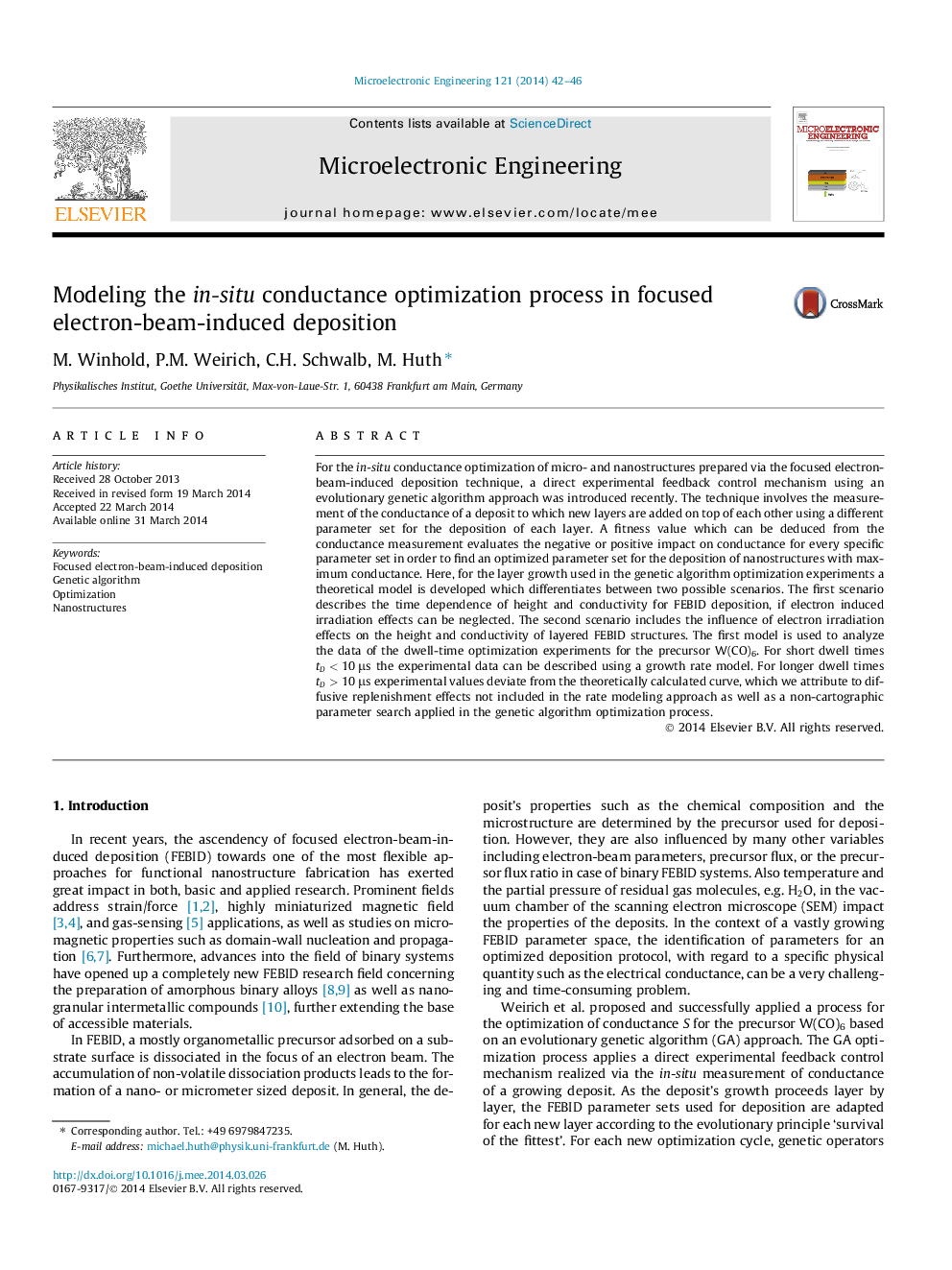| کد مقاله | کد نشریه | سال انتشار | مقاله انگلیسی | نسخه تمام متن |
|---|---|---|---|---|
| 539545 | 1450360 | 2014 | 5 صفحه PDF | دانلود رایگان |
• We model time evolution of height and conductivity of FEBID multilayer during growth.
• We relate a FEBID growth model with time-dependence of the conductance.
• We clarify the working principle of genetic algorithm for conductance optimization.
• For W(CO)6 conductance increase is dominated by height growth for short dwell times.
For the in-situ conductance optimization of micro- and nanostructures prepared via the focused electron-beam-induced deposition technique, a direct experimental feedback control mechanism using an evolutionary genetic algorithm approach was introduced recently. The technique involves the measurement of the conductance of a deposit to which new layers are added on top of each other using a different parameter set for the deposition of each layer. A fitness value which can be deduced from the conductance measurement evaluates the negative or positive impact on conductance for every specific parameter set in order to find an optimized parameter set for the deposition of nanostructures with maximum conductance. Here, for the layer growth used in the genetic algorithm optimization experiments a theoretical model is developed which differentiates between two possible scenarios. The first scenario describes the time dependence of height and conductivity for FEBID deposition, if electron induced irradiation effects can be neglected. The second scenario includes the influence of electron irradiation effects on the height and conductivity of layered FEBID structures. The first model is used to analyze the data of the dwell-time optimization experiments for the precursor W(CO)6. For short dwell times tD<10tD<10 μs the experimental data can be described using a growth rate model. For longer dwell times tD>10tD>10 μs experimental values deviate from the theoretically calculated curve, which we attribute to diffusive replenishment effects not included in the rate modeling approach as well as a non-cartographic parameter search applied in the genetic algorithm optimization process.
Figure optionsDownload as PowerPoint slide
Journal: Microelectronic Engineering - Volume 121, 1 June 2014, Pages 42–46
